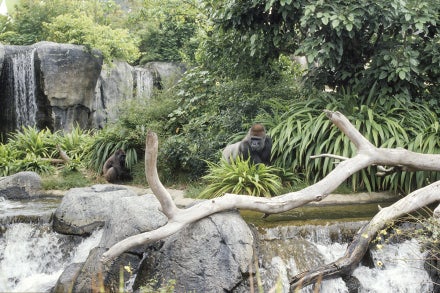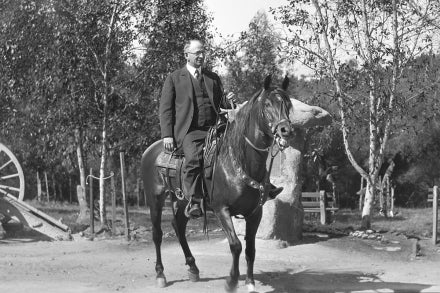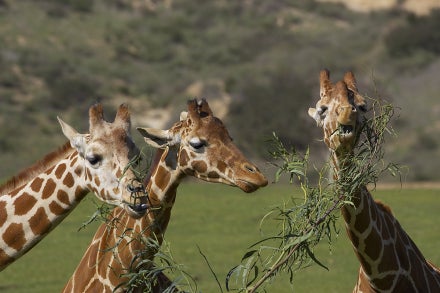FOR IMMEDIATE RELEASE
CONTACT:
San Diego Zoo Wildlife Alliance
Public Relations
619-685-3291
WEBSITE: sdzwa.org
MULITMEDIA NEWS RELEASE
San Diego Zoo Safari Park Welcomes a Tamandua Pup
SAN DIEGO (Aug. 6, 2021) – San Diego Zoo Wildlife Alliance is proud to announce the birth of a southern tamandua (pronounced tuh MAN deh wah) pup at the San Diego Zoo Safari Park. The female pup, yet to be named, was born July 21 to first-time tamandua parents, Cora and Fernando. Wildlife care specialists report the pup is healthy, and Cora is being a very good mother—nursing, cleaning and grooming her baby, and giving her constant attention.
“We are elated to have this little pup in our care,” said Lisa Peterson, executive director, San Diego Zoo Safari Park. “Both mom and pup are doing very well—and Cora is an attentive mom, keeping her pup nestled in their den the majority of the time, but venturing outside for up to an hour some days. It is great to see the pup developing, using her strong claws to cling to Cora’s back with confidence as Cora climbs about the habitat.”
Covered in fine, silky grayish-brown hair with a dark “V” down her back, it is estimated the pup will nurse for about five to six months, and begin trying foods like worms and a special high-protein insectivore powder mixed with water after two to three months. The father, Fernando, plays no role in helping raise the pup and does not share the same habitat as mom and baby. Tamanduas are typically solitary animals, except when mating.
Southern tamanduas are a type of anteater, and are often called lesser anteaters because they are much smaller than their relative, the giant anteater. Native to Central and South America, they are at home in trees and on the ground. They have small eyes and poor vision, but have acute senses of hearing and smell. Tamanduas feed mainly on small insects like ants and termites. Using their specialized mouth and 16-inch-long sticky tongue, tamanduas eat up to 9,000 ants in a single day. Tamanduas are covered in thick, coarse hair that helps keep ants from reaching their skin. Their enormous front claws help tamanduas climb in trees, and are also used for defense and when digging for food. They use their prehensile tail for balance and support while climbing.
Tamanduas are sometimes called “stinkers of the forest,” as they may release a very unpleasant odor, similar to a skunk's, from a gland at the base of their tail when a predator gets too close.
This pup was born to parents who were paired through a breeding recommendation from the Association of Zoos and Aquariums (AZA) Southern Tamandua Species Survival Plan (SSP), designed to help maintain a healthy assurance population of this species. Tamanduas are classified as a species of Least Concern on the International Union for Conservation of Nature (IUCN) Red List of Threatened Species, with stable populations. However, they are currently at risk due to habitat loss, and are being taken from their native habitats for the pet trade at an increasing rate. The San Diego Zoo welcomed another tamandua pup earlier this year, as part of the SSP.
Both Cora and her pup will remain in their off-view habitat for about two months, while they bond. As animal ambassadors for their species, when Cora is ready, she will bring her pup outside for longer periods of time, and guests may see them on a Behind-the-Scenes Safari at the Safari Park’s Wildlife Connections habitat or up close during an unscheduled wildlife presentation inside the Safari Park. Cora, Fernando and the pup can help guests learn more about tamanduas, helping inspire people to protect all wildlife and their habitats.
###
About San Diego Zoo Wildlife Alliance
San Diego Zoo Wildlife Alliance is a nonprofit international conservation leader, committed to inspiring a passion for nature and creating a world where all life thrives. The Alliance empowers people from around the globe to support their mission to conserve wildlife through innovation and partnerships. San Diego Zoo Wildlife Alliance supports cutting-edge conservation and brings the stories of their work back to the San Diego Zoo and San Diego Zoo Safari Park—giving millions of guests, in person and virtually, the opportunity to experience conservation in action. The work of San Diego Zoo Wildlife Alliance extends from San Diego to strategic and regional conservation “hubs” across the globe, where their strengths—via their “Conservation Toolbox,” including the renowned Wildlife Biodiversity Bank—are able to effectively align with hundreds of regional partners to improve outcomes for wildlife in more coordinated efforts. By leveraging these tools in wildlife care and conservation science, and through collaboration with hundreds of partners, San Diego Zoo Wildlife Alliance has reintroduced more than 44 endangered species to native habitats. Each year, San Diego Zoo Wildlife Alliance’s work reaches over 1 billion people in 150 countries via news media, social media, their websites, educational resources and the San Diego Zoo Kids channel, which is in children’s hospitals in 13 countries. Success is made possible by the support of members, donors and guests to the San Diego Zoo and San Diego Zoo Safari Park, who are Wildlife Allies committed to ensuring All Life Thrives.



